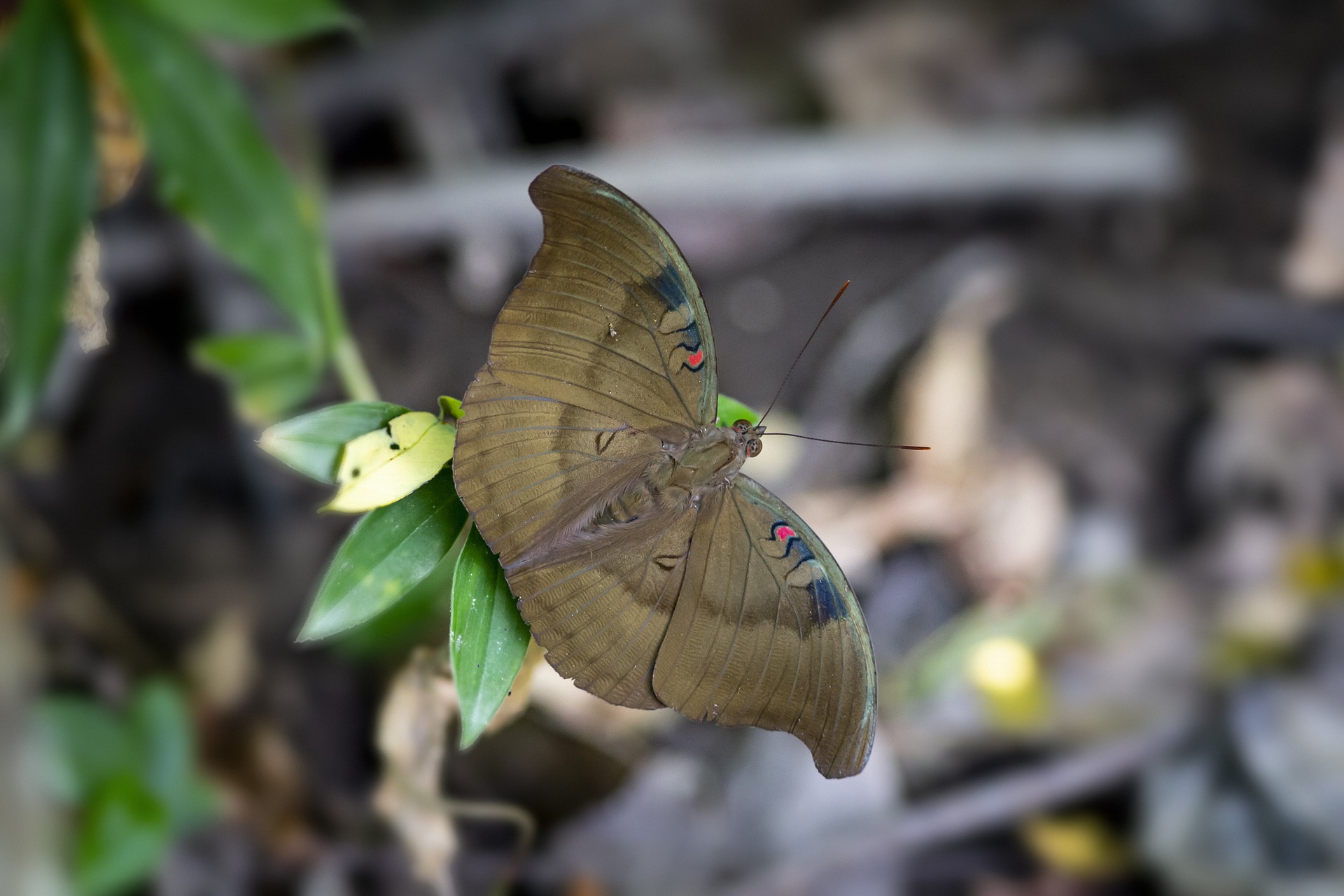The Common Baron (Euthalia aconthea) is a species of butterfly in the family Nymphalidae. It is widely distributed across South and Southeast Asia and is known for its distinctive wing patterns and colors. Here’s an overview of the Common Baron:
Appearance:
- Wingspan: The Common Baron has a wingspan of about 60 to 80 millimeters.
- Coloration:
- Male: The upper side of the male’s wings is brown with a characteristic greenish band running diagonally across the forewings. The hindwings have a similar greenish tint along the margin.
- Female: The female is larger and has a more subdued color pattern, with a brown upper side and white patches and bands. The forewings have several white spots.
- Underside: The underside of the wings is paler in both sexes, with intricate patterns that provide camouflage when the butterfly is at rest.
Habitat:
- Preferred Habitats: The Common Baron is typically found in forests, gardens, and wooded areas. It is often seen in the vicinity of its host plants.
- Geographic Range: This species is distributed across India, Sri Lanka, Myanmar, Thailand, Malaysia, Indonesia, and the Philippines.
Behavior:
- Feeding: Adult Common Barons feed on nectar from flowers, overripe fruits, and tree sap. They are also known to visit damp patches on the ground to obtain minerals.
- Larval Host Plants: The caterpillars feed on a variety of plants, including mango (Mangifera indica), cashew (Anacardium occidentale), and other members of the Anacardiaceae family.
- Flight Pattern: They have a strong and erratic flight pattern, often flying close to the ground and settling frequently.
Life Cycle:
- Eggs: Females lay eggs singly on the leaves of host plants.
- Larvae (Caterpillars): The caterpillars are well-camouflaged, green with a series of spines along the body, and they feed on the leaves of the host plants.
- Pupae: The pupae are green and resemble a leaf, which helps in camouflage against predators.
- Adults: After emerging from the pupae, adults seek mates and continue the cycle by laying eggs.
Ecological Role:
- Pollination: As nectar feeders, Common Barons contribute to the pollination of various flowering plants.
- Food Source: They are part of the food web, serving as prey for birds, reptiles, and other predators.
Conservation Status:
- Population: The Common Baron is not considered threatened and has a stable population across most of its range. It is commonly found in its preferred habitats.
- Threats: While this species is adaptable, habitat destruction and pesticide use can impact local populations.
Interesting Facts:
- Mimicry and Camouflage: The intricate patterns on the underside of the wings provide effective camouflage, making it difficult for predators to spot them when they are at rest.
- Fruit Feeding: In addition to feeding on nectar, they are often observed feeding on overripe fruits, which provides an additional food source.
Identification Tips:
- Greenish Bands: The greenish band on the forewings of the male and the white patches on the female’s wings are key identifying features.
- Camouflage: The well-camouflaged underside of the wings can help in identifying them when they are at rest on the ground or foliage.
- Erratic Flight: Observing their flight pattern can also aid in identification, as they tend to fly close to the ground with frequent stops.
In summary, the Common Baron (Euthalia aconthea) is a striking and adaptable butterfly species found in South and Southeast Asia. Its distinctive wing patterns, feeding habits, and role in the ecosystem make it a notable species within its range.
Visited 819 times, 15 visit(s) today
Views: 1556
Subscribe to the newsletter:
